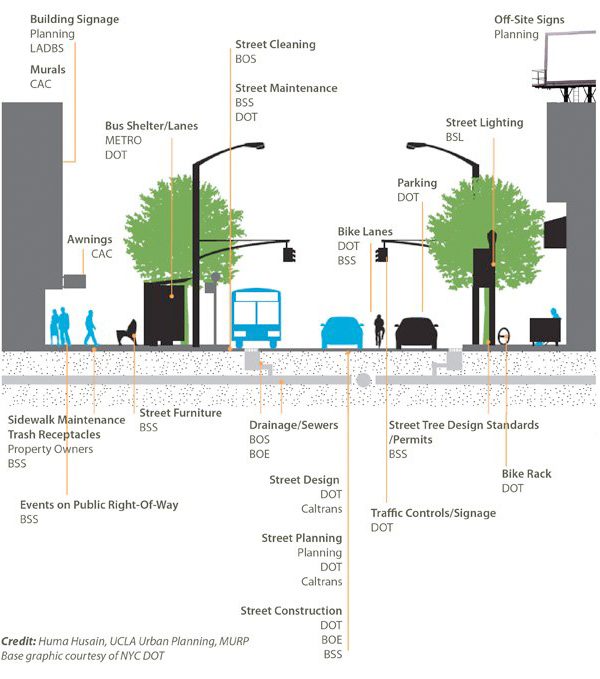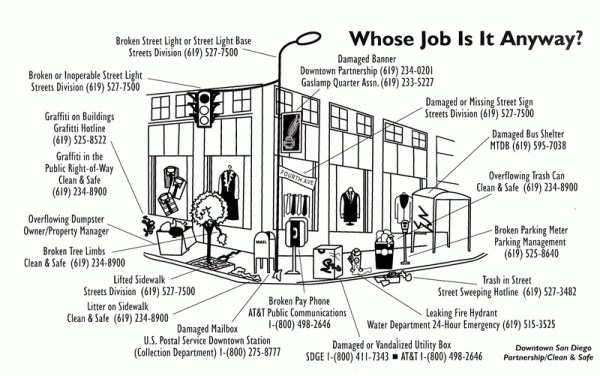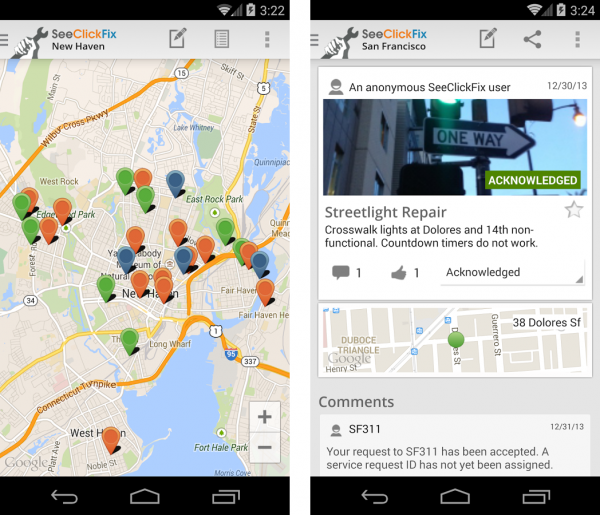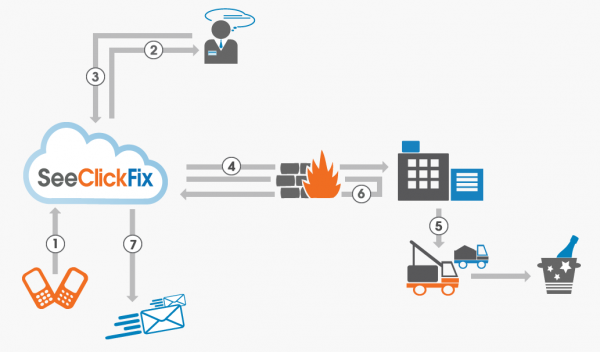City planners and officials face a lot of challenges when it comes to effecting change. A good idea, research, data analysis and design development is not enough — various laws, departments and agencies have to be factored in as well, with different budgets and priorities. But even keeping things the same can be a complex proposition.
As the cross-section above illustrates (specifically with respect to L.A.) how a single street can have a slew of municipal stakeholders including (but not limited to): the Los Angeles Department of Transportation, Bureau of Street Services, Bureau of Engineering, Department of Building and Safety, County Metropolitan Transportation Authority and the California Department of Transportation (CALTRANS).
When something needs repair, it can take an equally complicated diagram to identify who to call. Per the illustration, in downtown San Diego alone there are a dizzying array of numbers to report broken streetlights, damaged banners, missing signs, vandalized bus shelters, busted parking meters, trash in streets, overflowing dumpsters, leaky fire hydrants, lifted sidewalks, snapped tree limbs, and the list goes on. Some other cities at least have guides like these, but many don’t.
But while changing things is always hard,reporting things that need fixing things has started to get easier. In some cases, 311 services can do the trick, allowing people to flag various issues with an all-in-one phone call. There are also companies like SeeClickFix, which provides “a community-driven communication tool and work management system that bridges the gap between residents and their local governments to increase civic responsibility and improve citizen services.” Basically, the app routes complaints to the right department and helps municipalities track, organize and address issues as they come in. Various cities around the country use white-labeled versions of this application.
There are a lot of potential upsides to centralizing these kinds of reporting technologies. For cities, they make tracking data across different issues easier and streamline things, saving time and money spent on dedicated call centers. Citizens, meanwhile, can make specific suggestions, submit images and videos, sign up for alerts and track submitted problems through to successful outcomes. For both parties, the ability to report anonymously and easily can improve civic engagement, reducing reluctance and resulting in faster fixes, too.







Leave a Comment
Share